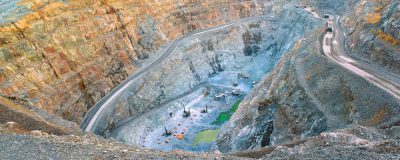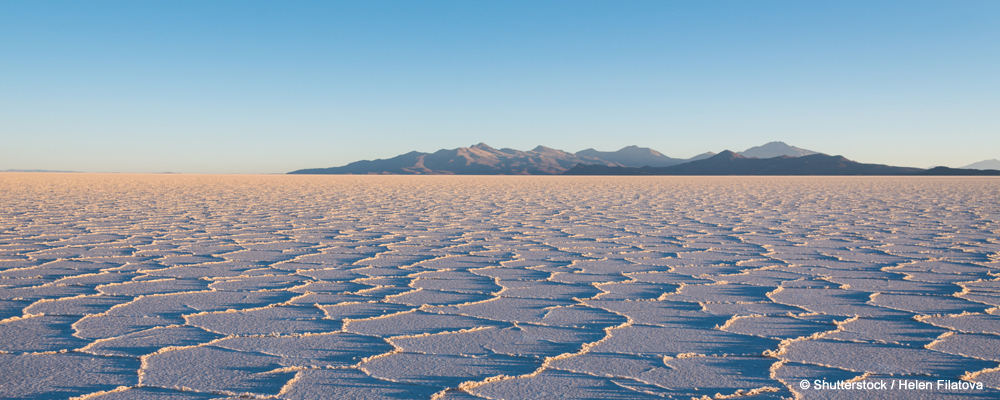This interview has been adapted from Shaping Sustainable Mining: A Conversation with DHI Experts Robin Marc Dufour and Mikael Kamp, during the II International Congress on Groundwater, Lima Peru April 2025.
As global demand for renewable energy solutions intensifies, the mining industry is increasingly recognised as a cornerstone of the energy transition. We recently spoke with Robin Marc Dufour, Vice President of Mining and Groundwater and Mikael Kamp Soerensen, who leads Energy & Water Resources at DHI, to understand how DHI is addressing critical water-related challenges to support sustainable mining through integrated water strategies and digital innovations.
Why is mining such a key part of the energy transition?
Mikael: Mining and energy are fundamentally intertwined. Renewable energy technologies like wind turbines, solar panels and batteries heavily depend on mined materials. Our role at DHI is to provide expert advice supported by numerical modelling, to help clients manage water sustainably in their operations and hence reduce their environmental footprint. Water, energy and minerals are the foundation of modern infrastructure – and managing these resources well is essential to building climate resilience.
What are the biggest water-related challenges in mining?
Robin: For mining companies, water is often the most critical operational concern. It’s about safely managing tailings, controlling seepage, ensuring pit stability and minimising environmental impacts. In many cases, mining operations are constrained not by the availability of ore but by the availability and regulation of water resources.
How does DHI support the mining sector in tackling these issues?
Robin: We combine local knowledge with advanced modelling tools to help companies make better decisions. A big part of that is our digital platform, MIKE Mine, which supports water management across the full mine lifecycle.
MIKE Mine integrates field data, sophisticated numerical modelling and forecasting capabilities into a single accessible digital twin. The platform empowers mining companies to visualise potential impacts, manage water efficiently and transparently engage stakeholders such as governments, NGOs and local communities. It brings clarity and consistency to water-related data, enabling better long-term planning and compliance with international standards.
Mikael: MIKE Mine fosters internal transparency, allowing mining companies to control data sharing while demonstrating their environmental accountability. The flexibility of the platform also allows companies to tailor their stakeholder engagement strategy by sharing relevant information without exposing sensitive operational data. Over time, this creates a digital culture of trust, accountability and continual improvement.

What makes water management in Peru unique, and how has DHI Peru become a key player in addressing these challenges?
Robin: Water management in Peru is unique due to the country’s complex geological environment, particularly in the Andes. Unlike the simple geologies in Europe, the complexity in Peru demands sophisticated 3D geological modelling. DHI Peru, established over a decade ago, has become a hub of specialised expertise in managing water challenges specific to complex geological environments.
This expertise has positioned DHI as a trusted advisor to major Peruvian mines including Antamina, MMG and Volcan. These models not only help predict water flow and pressure under variable geological conditions but also serve as vital tools for mine planning, permitting and closure strategies.
What are the future challenges and opportunities in mining related to water management?
Mikael: As climate variability and competing water demands intensify, DHI continues to prioritise research in resilience, biodiversity and digital innovation. We must help industries become resilient to changing water availability and regulatory requirements. Water scarcity and variability, often driven by climate change, are forcing mining companies to rethink their long-term water sourcing, storage and recycling strategies.
Robin: We envision a future where mines are not isolated entities but integral parts of their water basins, collaborating openly with agricultural and urban stakeholders. This kind of basin-wide, multi-user water management approach not only promotes long-term viability for all parties but also strengthens the social license to operate for mining companies.
Looking ahead, DHI aims to drive innovation through research-focused solutions like MIKE Mine, promote transparency among stakeholders and strengthen resilience in mining operations. Mining is essential for global sustainability, and with the right practices, it can indeed coexist positively with other sectors.
Sustainability in mining is no longer a goal but a necessity, and digital tools, stakeholder engagement and data-driven decision-making will define the future of responsible mining.
Through continued innovation and expert advisory services, DHI remains at the forefront of sustainable water management solutions, ensuring that mining operations contribute responsibly to the global energy transition. As new projects emerge in Latin America and across the globe, DHI continues to support mining companies with integrated, adaptive and future-proof solutions that balance productivity with environmental stewardship.
To explore advanced mine water solutions like MIKE Mine, reach out to learn how DHI’s cloud-based platforms can help you make smarter, faster decisions at your mine site.








